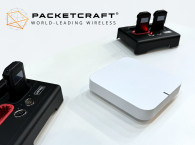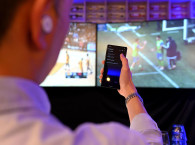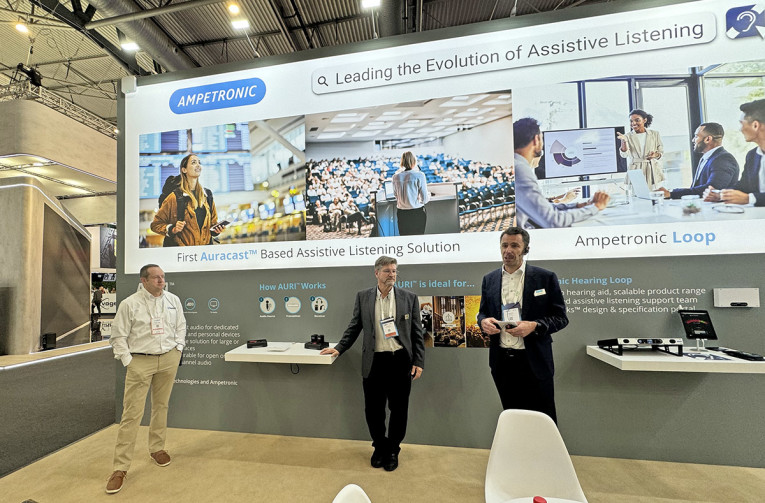
At this stage, when the first Bluetooth LE Audio enabled devices and solutions are starting to become available, any initiatives to demonstrate the practical aspects of the new technology and its multiple applications are of major importance. At the start of the second show day at Integrated Systems Europe 2024, Listen Technologies and Ampetronic, two companies now owned by Swedish conglomerate Allvida, promoted a demonstration of the possibilities of Auracast for Assistive Listening.
As the new broadcast audio standard for Bluetooth Low Energy audio, Auracast allows any number of audio sources to be simultaneously available to an unlimited number of Auracast compatible devices, including receivers, hearing aids, earbuds, and smartphones. Auracast broadcast audio technology will transform the way hearing assistance is delivered in public spaces, enabling any Auracast compatible device to easily connect directly to transmitters.
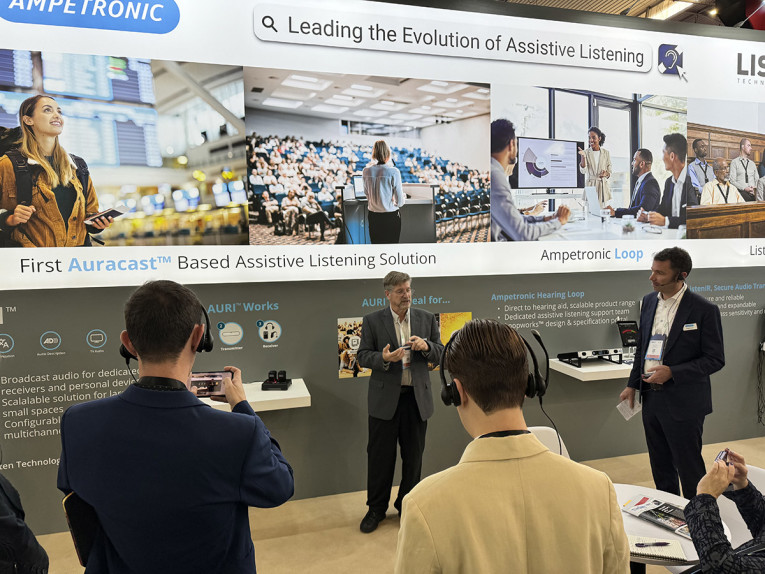
The expectation is that users will very quickly be able to use their own devices to “tune in” to those available sources at any given moment. People with hearing aids, cochlear implants, or receivers that are Auracast compatible will be able to connect to a transmitter and receive high quality audio without added noise or effects caused by the room environment. This will provide both improved experience and broader inclusivity.
As a company with expertise in this field, Listen Technologies and Ampetronic are developing the first complete solution to let venues and end users adopt Auracast broadcast audio technology now. Their solution includes networked installed transmitters for multichannel broadcast for small and large spaces, with the option for open or secure transmission. In line with their current systems for assistive listening and other wireless audio applications, the current Auracast solution (pictured below) also uses dedicated receivers and charging bases, and a complete line of accessories, including headphones, neck loops, and network management and configuration software.
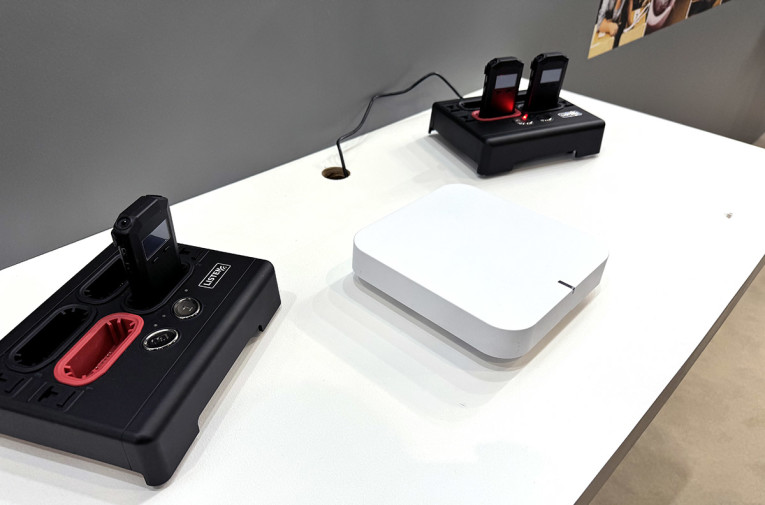
For Listen Technologies and Ampetronic this is a natural opportunity to expand its range of solutions for the commercial integration market, knowing that they leverage the Bluetooth LE Audio set of specifications published by the Bluetooth SIG, and that Auracast technology will be compatible with any subsequent LE Audio devices that are becoming available.
As Auracast receivers are built into hearing aids, smartphones, earbuds, and headphones, these devices will be able to receive an Auracast broadcast stream. That means the assistive listening system will be available to anyone with their own device, providing much broader inclusion than any existing technology. In the future, an end user with an Auracast certified device will be able to select an audio stream without needing a special app installed or needing to borrow a receiving device, but it may take several years to reach that point.

During the press conference, Tracy Bathurst, chief technology officer at Listen Technologies, and Julian Pieters, Managing Director at Ampetronic, provided the broad details about the new Auracast based assistive listening solution and demonstrated the system, which used three different transmitters positioned at different areas of the booth making three different audio channels available.
“Our project with Listen Technologies is a major step in furthering inclusion and hearing accessibility,” said Julian Pieters. “At Ampetronic, we have always provided audio direct to hearing aids, wherever possible, to the advantage of hard of hearing end users as well as venues. Since 2013, we have worked alongside the hearing aid industry and the Bluetooth standards organization to create a roadmap for new technology. It is very exciting to take the first steps into the market. While it will take time to see Auracast receivers widely available, this complete system with dedicated receivers means venues can adopt the technology now.”
In a dedicated information area (pictured below), Chuck Sabin, Senior Director, Market Development for the Bluetooth SIG, explained in more detail the context for this new technology update, and demonstrated how users will be able to “tune in” to those publicly available channels, using currently available Samsung smartphones and Samsung Buds, as well as hearing aids, which are among the first Auracast-enabled systems available in the market.
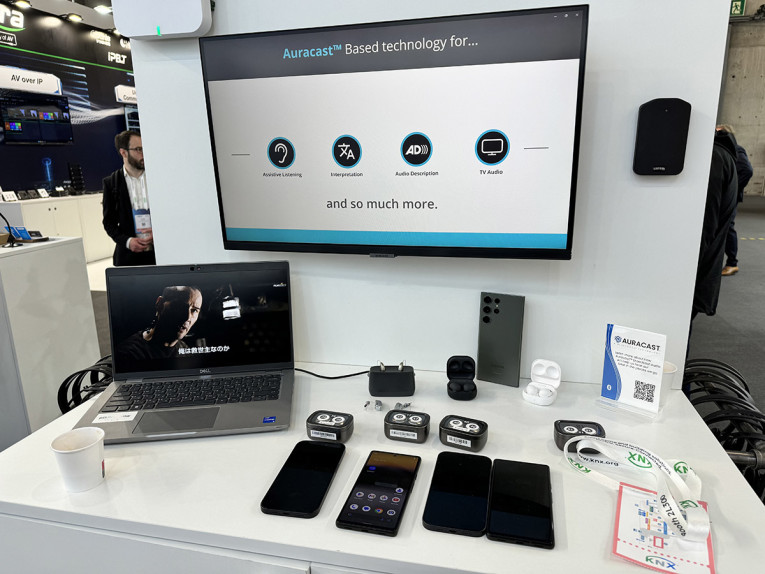
On the Assistive Listening Solutions approach, Listen Technologies and Ampetronic made sure to promote the complete solution that very soon will be available for deployment. Leveraging its vast experience in other wireless technologies, including Wi-Fi systems, Auracast transmitters available from the two companies use their own antennas and RF implementation, being able to cover a range of around 50 meters (164 ft) in normal circumstances. For actual deployment the company will be able to provide multiple transmitters that will be linked and will enable extending and adjusting the coverage to any type of footprint coverage required.
The dedicated Listen Auracast transmitters and receivers that were demonstrated will be able to seamlessly switch from a transmitter to another in the same installation, without noticeable audio glitches for the user. That will not be the case with Auracast transmitters that will be embedded in TV displays, as an example (which will have much more limited range as well). Naturally, the expectation for companies such as Listen Technologies, which are highly experienced in this field, is that actual deployments in public spaces will generate extensive business opportunities in the near future and a considerable new field of activity for system integrators.

As Tracy Bathurst explained to audioXpress, the exact set of specifications for RF coverage in these environments and the protocol for linking multiple Auracast transmitters will require a new set of specifications that member companies of the Bluetooth SIG (such as Listen Technologies and Ampetronic) will continue to contribute. Its publication schedule will need to be determined by the Bluetooth SIG, once there is enough input and review from everyone involved in this field, not forgetting that these RF systems will need to comply with existing regulations determined by local agencies, such as the Federal Communications Commission (FCC) in the United States.
Both Ampetronic and Listen Technologies are Auracast collaboration partners in the Bluetooth Special Interest Group (SIG), contributing to standards development and interoperability testing. Ampetronic and Listen Technologies have also collaborated with leading hearing aid manufacturers, microphone manufacturers, and audio infrastructure companies to deliver a robust and reliable technology platform for installation in public environments.

For now, the deployment of fully integrated solutions for Auracast based assistive listening in public spaces will be an important way to create awareness for the possibilities of the new technology, which is expected to replace conventional audio induction loop systems in the next 10 years. As Chuck Sabin shared with audioXpress, the availability of Auracast sources for assistive listening, will gradually expand to serve also augmentation for everyone - as Bluetooth LE Audio becomes broadly available in mobile devices, headphones and TWS earbuds.
This will enable the multiple applications scenarios that the Bluetooth SIG has been promoting in its Auracast Experience initiatives, which showcases the possibilities for multiple TV channel audio in sports bars or lounges, gate announcements at airports, language channels in events, and many other use cases in public spaces that companies such as Listen Technologies and many others will be able to support.
www.bluetooth.com
www.ampetronic.com
www.listentech.com





